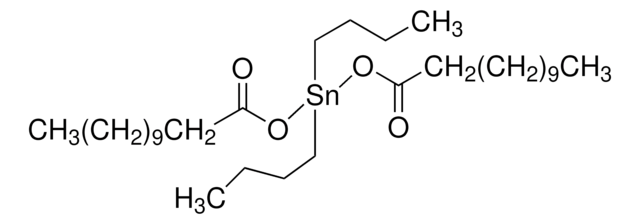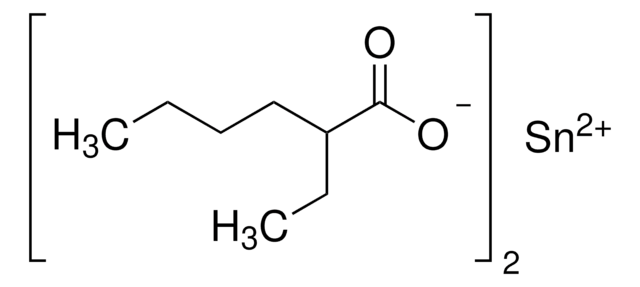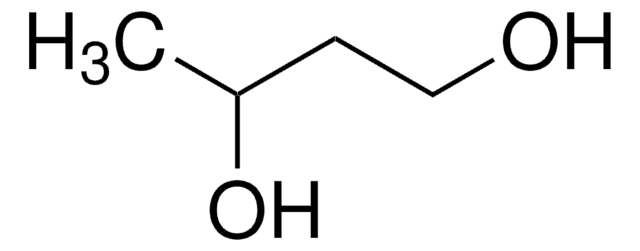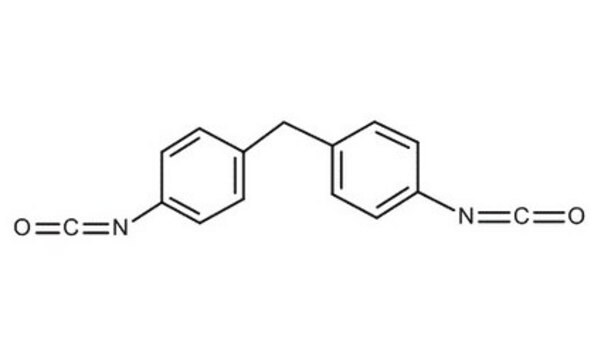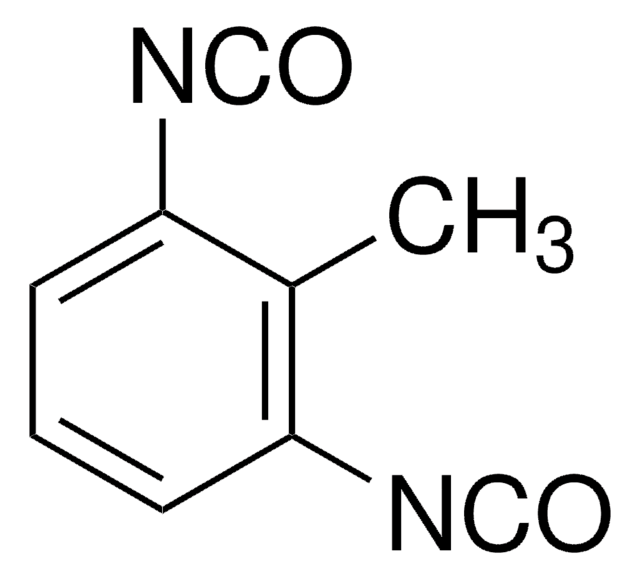52650
Hexamethylene diisocyanate
purum, ≥98.0% (GC)
Sinônimo(s):
1,6-Diisocyanatohexane
About This Item
Produtos recomendados
grau
purum
Nível de qualidade
Ensaio
≥98.0% (GC)
índice de refração
n20/D 1.453
pb
82-85 °C/0.1 mmHg
densidade
1.047 g/mL at 20 °C (lit.)
cadeia de caracteres SMILES
O=C=NCCCCCCN=C=O
InChI
1S/C8H12N2O2/c11-7-9-5-3-1-2-4-6-10-8-12/h1-6H2
chave InChI
RRAMGCGOFNQTLD-UHFFFAOYSA-N
Procurando produtos similares? Visita Guia de comparação de produtos
Categorias relacionadas
Descrição geral
Aplicação
- A crosslinker to crosslink the polyurethane chains in the triblock copolymer gate dielectric, which is then deposited on the substrate to fabricate low-voltage organic thin-film transistors.
- A precursor in the preparation of electroactive shape memory polyurethane/graphene nanocomposites. These materials are usually used as actuators, sensors, artificial muscles, smart devices, and microswitches.
- A crosslinker in conjunction with Pluronic F127, a nonionic surfactant, to synthesize a poly(lactic acid) (PLA)-based hydrogel for biomedical applications.
Palavra indicadora
Danger
Frases de perigo
Declarações de precaução
Classificações de perigo
Acute Tox. 1 Inhalation - Acute Tox. 4 Oral - Eye Dam. 1 - Resp. Sens. 1 - Skin Corr. 1C - Skin Sens. 1 - STOT SE 3
Órgãos-alvo
Respiratory system
Código de classe de armazenamento
6.1A - Combustible acute toxic Cat. 1 and 2 / very toxic hazardous materials
Classe de risco de água (WGK)
WGK 1
Ponto de fulgor (°F)
266.0 °F - Pensky-Martens closed cup
Ponto de fulgor (°C)
130 °C - Pensky-Martens closed cup
Equipamento de proteção individual
Eyeshields, Faceshields, Gloves, type ABEK (EN14387) respirator filter
Escolha uma das versões mais recentes:
Já possui este produto?
Encontre a documentação dos produtos que você adquiriu recentemente na biblioteca de documentos.
Os clientes também visualizaram
Protocolos
HPLC Analysis of Isocyanates on Titan™ C18
Nossa equipe de cientistas tem experiência em todas as áreas de pesquisa, incluindo Life Sciences, ciência de materiais, síntese química, cromatografia, química analítica e muitas outras.
Entre em contato com a assistência técnica

